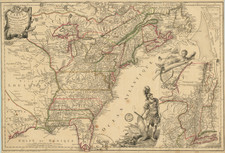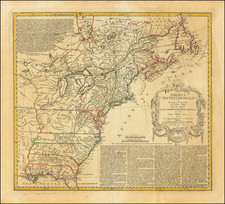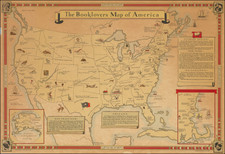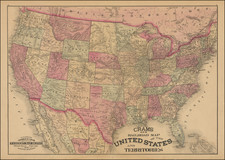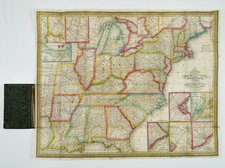Scarce map of the United States, prepared to accompany the report of Dr. J.M. Toner on the Distribution of Yellow Fever in the United States for the Annual Report of the Supervising Surgeon General of The Marine Hospital Service of the United States for the Fiscal Year 1873.
Dr. Toner's report was apparently of great importance, as it was the subject of numerous journal articles in 1874, including the New England Journal of Medicine.
The report begins as follows:
THE DISTRIBUTION AND NATURAL HISTORY OF YELLOW FEVER AS IT HAS OCCURRED AT DIFFERENT TIMES IN THE UNITED STATES.
By J. M. Toner, M. D.,
President of the American Medical Association, Washington, D.C.
The map which accompanies this paper, and which indicates the region where yellow fever has prevailed, either in an epidemic or in a sporadic form since the settlement of our country, is made up from notes taken in the study of the geographical distribution of the diseases of the United States.*
No special opportunities for studying the disease in question are claimed, nor originality in the mode of presenting the facts. Nevertheless, the map is believed to be accurate as far as it goes, if the data derived from past and contemporary medical literature can be relied upon.
Nor is it pretended that this paper is exhanstive, localities not named having, no doubt, been visited by this fever; but we are confident such localities will be found within the region of its general distribution, as here indicated.
The table accompanying this paper, which furnishes mainly the data upon which the map is projected, gives the names of the cities and other localities where yellow fever has occurred in our country from its first settlement, arranged by States in alphabetical order, with the years and dates of its appearance and disappearance.
The elevation of each locality above the sea-level, as far as possible, has been given from reliable sources. In some instances the elevation of a place is assumed from a general knowledge of the altitude of the surrounding country. The errors in these, if any, will be unimportant.
The influence upon localities of elevation above the sea-level, with the exemption from yellow-fever they seem to thence possess, is the view we here wish to call to the attention of sanitarists and of the profession.
We are inclined to give much weight to the theory that diseases have geographical areas and limits, modified somewhat by topographical and climatic conditions, which determine the types of disease as do climate and elevation the fanna and flora of a locality.
The fact has always been patent to the profession, that there are parts of the earth in which particular forms of disease occur, to the almost entire exclusion of others. The study of the canses of this difference is as important as any that can engage the attention of the physician. As a simple factor elevation will, we apprehend, be found to possess qualities both preventive and curative.
We shall in this paper studiously avoid discussing the questions whether yellow fever is a specific disease or not; whether it is always imported; or whetherunder certain conditions it may originate within our own country.
Nor do we aim to speak as an expert, never having seen a case of yellow fever, but rather appear as a collator of facts in its history. At the present time the natural history of disease, if we may so use the term in describing the special characteristic distribution of diseases that exist in limited geographical areas, is attracting much attention. There can be no doubt that an accurate knowledge of the climate and other physical peculiarities, and of the prevailing meteorological conditions of a region, will greatly aid the sanitarist and physician in preventing sickness, and in treating successfully the diseases incident to a locality.
The more exact and extended this information becomes, the more definitely can physicians mark out the boundaries and the distribution of diseases over the globe, and suggest measures of relief.
The chief factors usually and most naturally taken into account in the study of the salubrity of a State, or even a city, are latitude, longitude, the extremes of heat and cold and mean annual temperature, the prevailing direction of the winds, the general humidity of the air, and the annual precipitation, drainage, etc.
These undoubtedly furnish most valuable information, but there is another important element, that of elevation, which has the power to intensify or counteract the influence of most of them.
The most insalubrious regions are, confessedly, the savannas and tide-water lands of the tropic and temperate zones. The impression is quite general fliat persons of the same nationality, living on mountains or high table-lands are more rugged and healthy, as a general rule, than their friends engaged in similar occupations on the low lands in the same latitnde.
The accompanying map enables us, in a comprehensive way, to consider the question whether elevation has presented any barrier to the progress of yellow fever in the United States, by bringing all localities where it has prevailed, with their altitudes, before the eye at one time.









